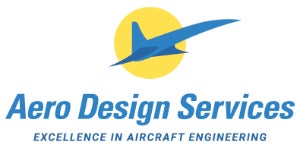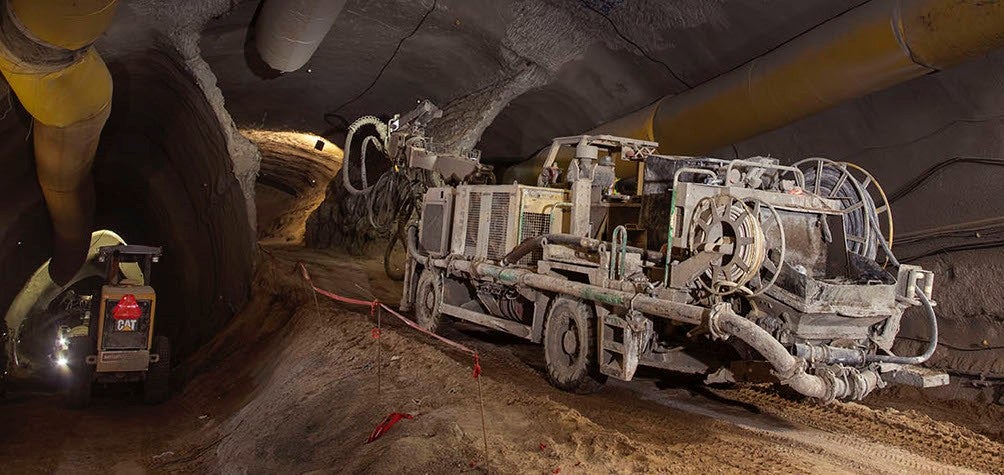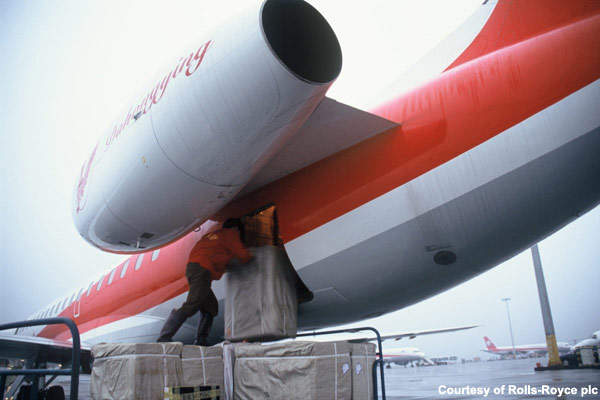
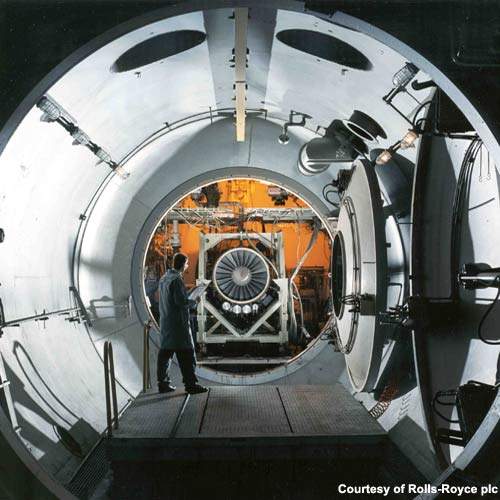
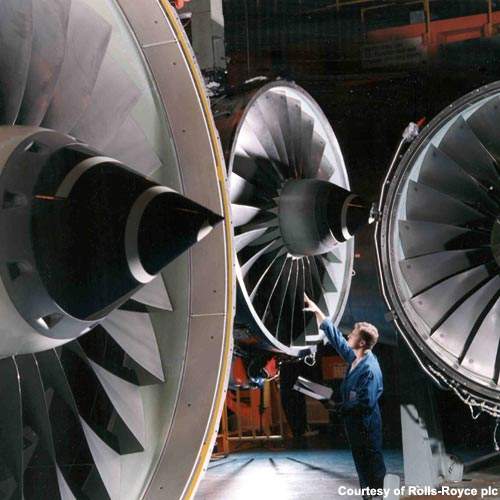
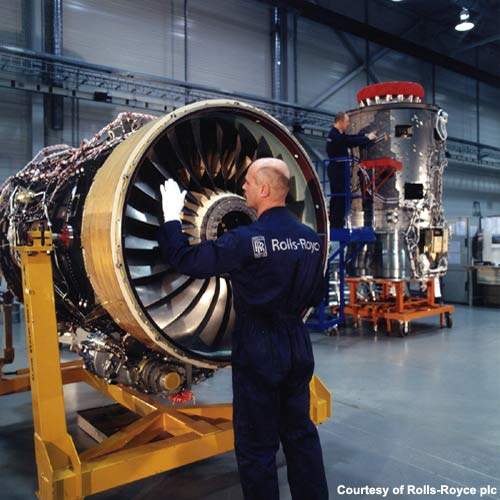
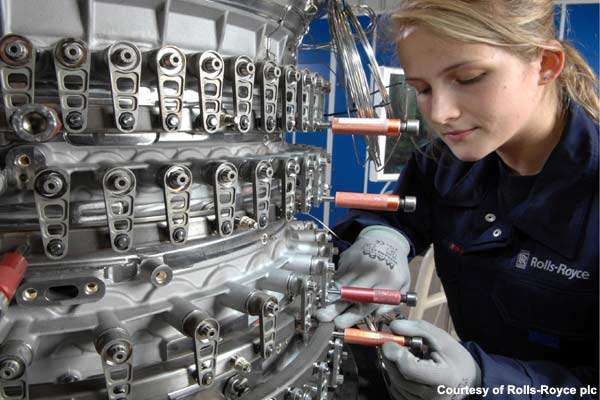
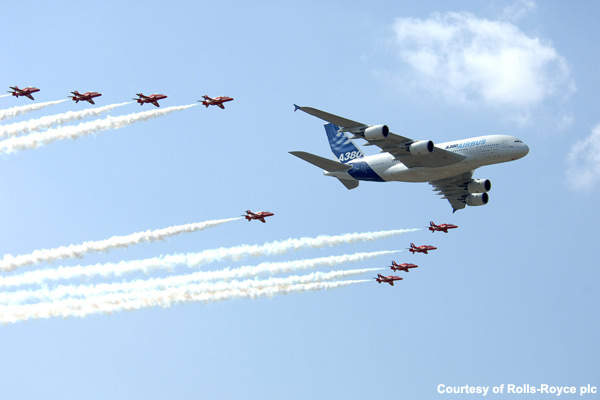
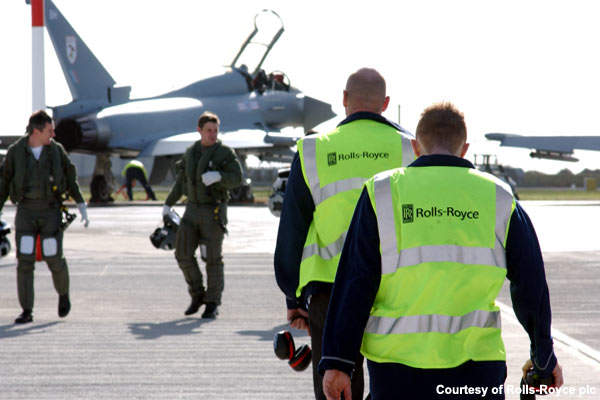
Skills shortages have plagued the aerospace engineering sector globally in recent years, forcing companies at home and abroad to compete for what seems to be a dwindling pool of talent.
For decades, high school students in most developed nations have been turning away from maths and science – meaning they do not have the background to train in engineering, leaving a sector that turned over £20bn in 2006 struggling to attract and retain staff.
According to the Institution of Mechanical Engineers, engineering, including aerospace, is going to need 20,000 graduate-level workers over the next six years in the north-east of the UK alone.
A GLOBAL ENGINEERING PHENOMENON
Andy Leather, director of AeIGT Programmes for the Society of British Aerospace Companies (SBAC), says the problem is not unique to the United Kingdom, with the United States and other countries all in the same boat.
“There are many issues contributing to the problem, one of which is the education system,” Leather said.
While aerospace is one of the United Kingdom’s premier wealth-creating sectors, employing 124,000 people – including 2,600 apprentices – and another 300,000 across the broader supply chain, Leather says attracting and retaining engineering graduates is getting harder.
Ken Swift an engineering professor at Hull University says not only are high school students turning away from maths and science, many also have no any interest in engineering, opting instead for the perceived glamour of city jobs.
“We are facing a severe shortage of people taking engineering at degree level, and when they do they are lured by finance companies and banks,” Swift says. “Our university took 75 mechanical engineering students this year, but we could have taken a further 50% on that. Students just don’t want to do it.”
The United Kingdom’s aerospace industry is second largest globally, behind the United States, and exports 63% of total sales. Average salaries in the sector are £35,168 – 44% higher than the United Kingdom average, and 31% above the manufacturing average, according to the Society of British Aerospace Companies.
“It provides high value-added and highly skilled jobs,” Leather says. “However, a lack of public awareness exists, partly because we are not so good at singing our own praises.”
There are big opportunities on the horizon, says Leather, but more investment in skills across the sector must be secured.
It also requires an improved means of bridging the mid-career skill gaps and improved mechanisms to increase the number and calibre of our apprentices.
Faster investment in aerospace technology is needed alongside an integrated industrial strategy involving industry, government, academia and unions, Leather suggests.
“Companies work very well with universities and schools, but it could be better. SBAC will be working to cohere the sector and build on areas of existing best practice,” he said.
The skills shortage is not across the board however and some specialties can be in demand in one area, others in another. It’s a complex picture.
“If you talk to Rolls-Royce, they’ll say they’re having a problem getting good graduates, but others are having specific difficulties in getting mechanical engineers,” Leather said.
A spokesperson for the University of Liverpool says not all aerospace graduates go on to become aerospace engineers while maths, physics and material science graduates can also become aerospace engineers, leaving it difficult to enumerate how many aerospace engineering graduates UK universities are producing.
SKILLS SHORTAGE RESEARCH
A BMG Research report for the Sector Skills Council for Science, Engineering and Manufacturing Technologies (SEMTA) found significant engineering shortages.
Aerospace, which accounts for 1% of engineering organisations in the United Kingdom, was the second most likely sector, after marine, to experience hard-to-fill vacancies, with 16% of the 5,129 companies surveyed reporting a problem.
“In aerospace, 14% have found professional occupations hard to fill, with 28% finding associate professional and technical roles hard to fill,” BMG said.
Just 4% said higher wages were offered elsewhere.
Worryingly, though, 18% of aerospace organisations said there was a general lack of applicants.
57% of aerospace companies reported a lack of applicants with required skills and qualifications, and 18% said few applicants had the required working experience. 5% said applicants lacked basic ability on which to build, while 9% said applicants had poor motivation and attitude.
10% added that their vacancies had a specialist skill nature, aerospace companies especially, of which 15% had problems recruiting graduates and 11% difficulties recruiting for specific aeronautical areas.
While a lack of applicants with required qualifications and skills was highlighted the study also found issues around the industry image, the unappealing nature of some job duties and lack of interest in taking on the jobs on offer.
It also found that 67% of organisations said there were skill gaps in the staff they already had, with new product development, working practices, equipment and legislative requirements the cause.
SEMTA can break the needs down further. In aerospace, missing technical engineering skills include general engineering, CNC, CAD and CAM as well as management and key personal skills. MRO conversion to licensed engineers is also not happening. Meanwhile, thousands of technicians are needed for non-destructive testing, avionics and aircraft maintenance, the organisation said.
WHAT’S BEING DONE?
SBAC is campaigning for improved public awareness and has helped develop a National Skills Academy for Manufacturing for simplifying the fragmented and complex training funding arrangements. SBAC is also creating an industry-specific development programme for trainers and assessors, to be audited nationally.
“Many companies are also investing in their workforces. Last year, Rolls-Royce spent £25m on United Kingdom graduate, apprentice and vocational training programmes. They have 296 graduates and 446 apprentices on learning programmes in the UK – and have plans to expand this,” SBAC’s Leather said.
The BMG survey found 46% of aerospace organisations were already funding and arranging additional training, while 36% of aerospace respondents said they were already funding off-the-job training, 40% upskilling, and 23% apprenticeships and N/SVQs.
SEMTA has developed a stepping-stone higher engineering apprenticeship framework under pilot to progress apprentices to graduate-level engineering. Earlier this year, the Engineering Employers Federation launched a review of apprenticeships and supported initiatives such as the Whitworth Scholarship scheme for engineering apprentices who wish to get a degree. Rolls-Royce is offering a science prize to encourage more young people into engineering.
Recent years have seen launches of new colleges incorporating aerospace engineering courses, such as Farnborough College of Technology’s SkillAir Centre of Vocational Excellence and the new Newcastle Aviation Academy. Universities, too, are working on producing more ‘industry-ready’ graduates, investing millions in new programmes.
Aerospace companies such as Thales, BAE Systems and Clyde Space have all thrown their hat into the ring, developing and supporting initiatives that boost engineering’s appeal or train recruits. Will it all be enough? Only time will tell.



